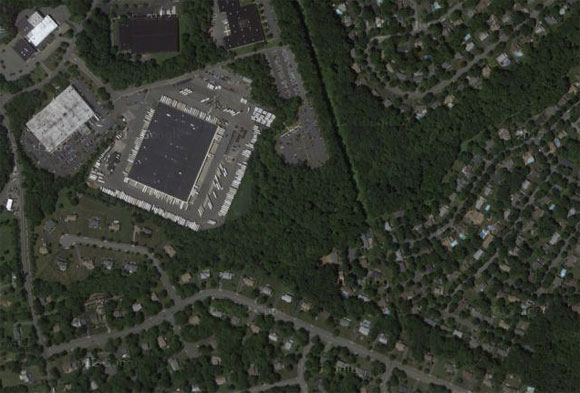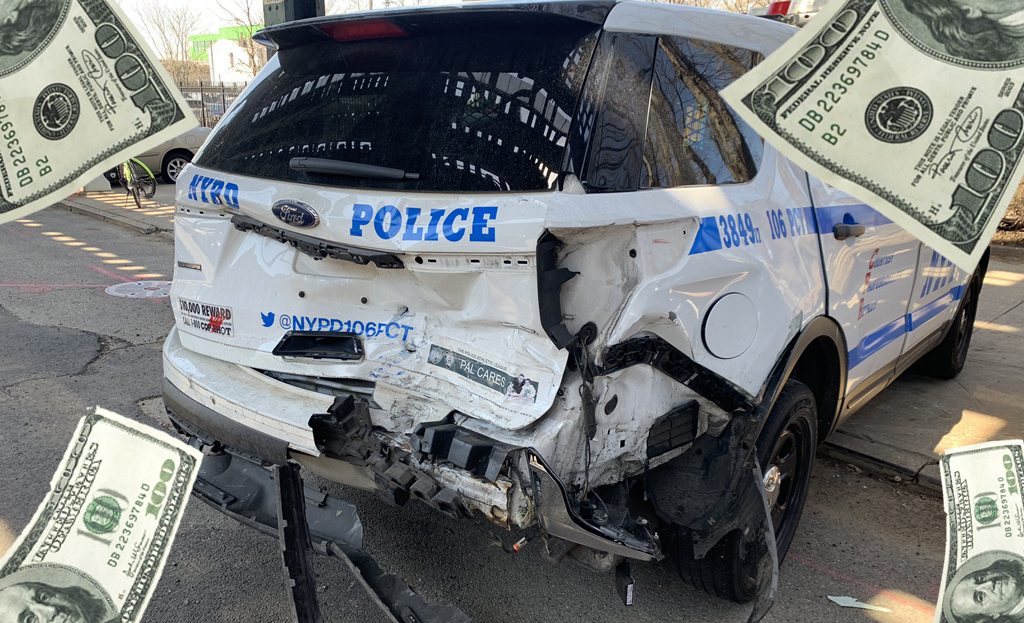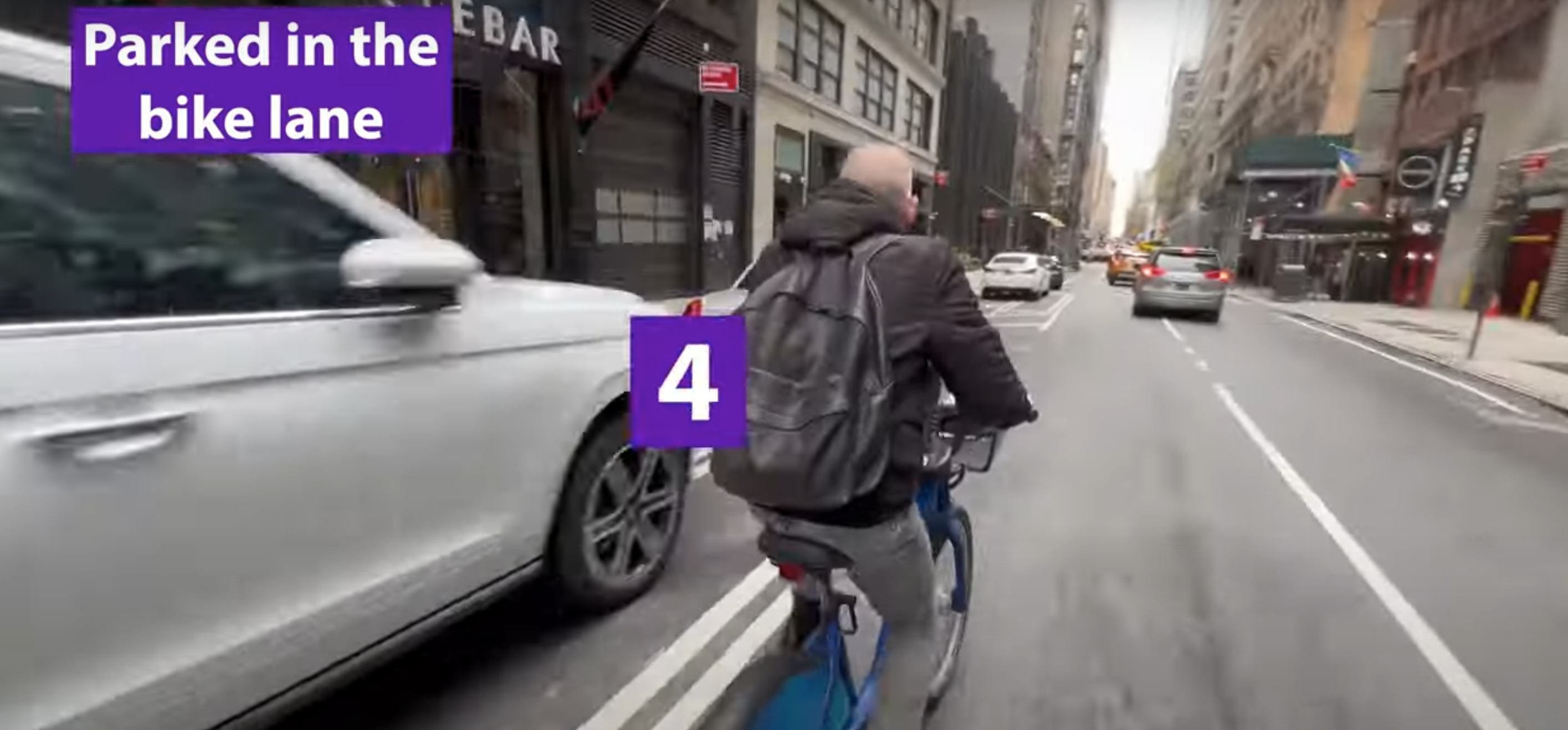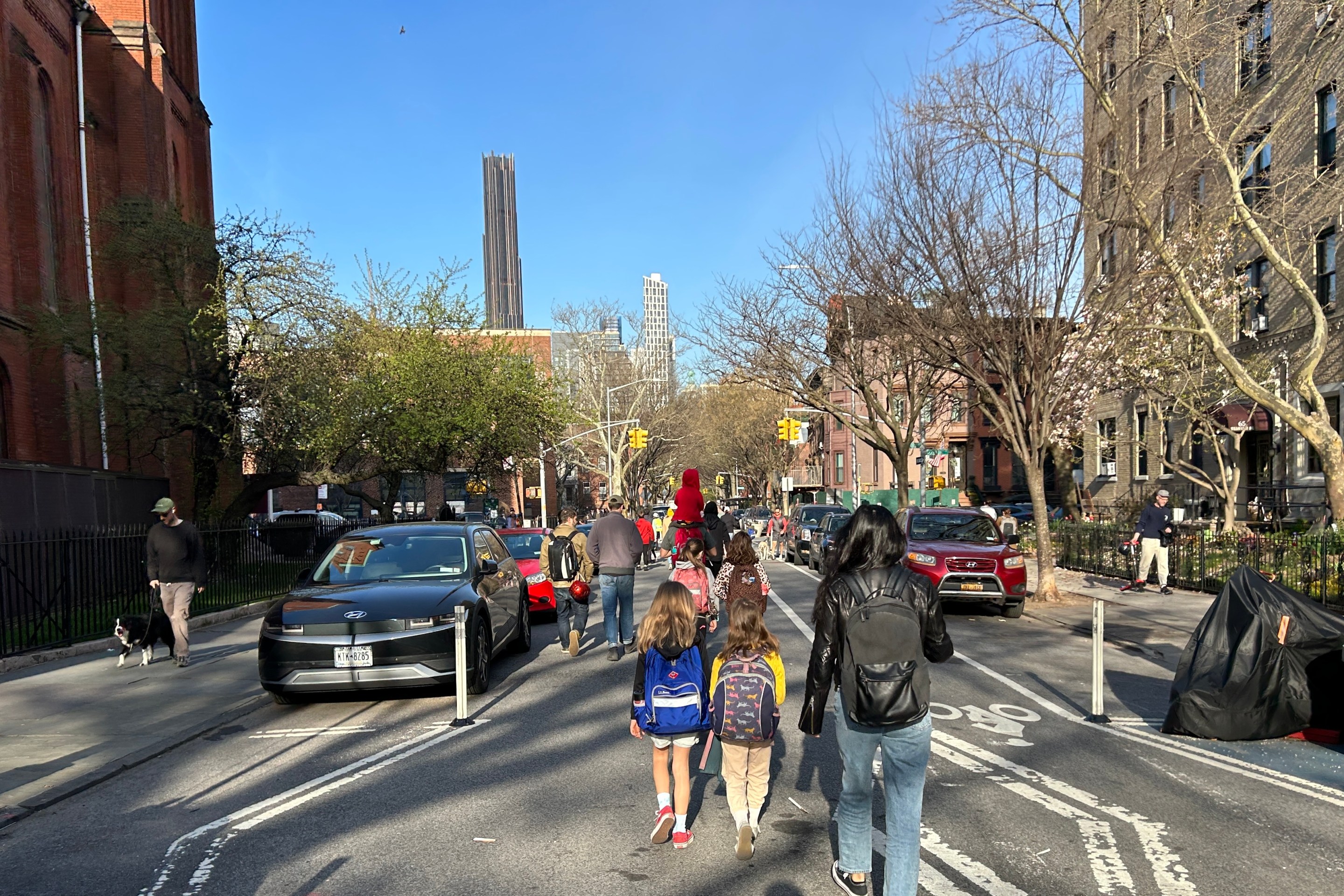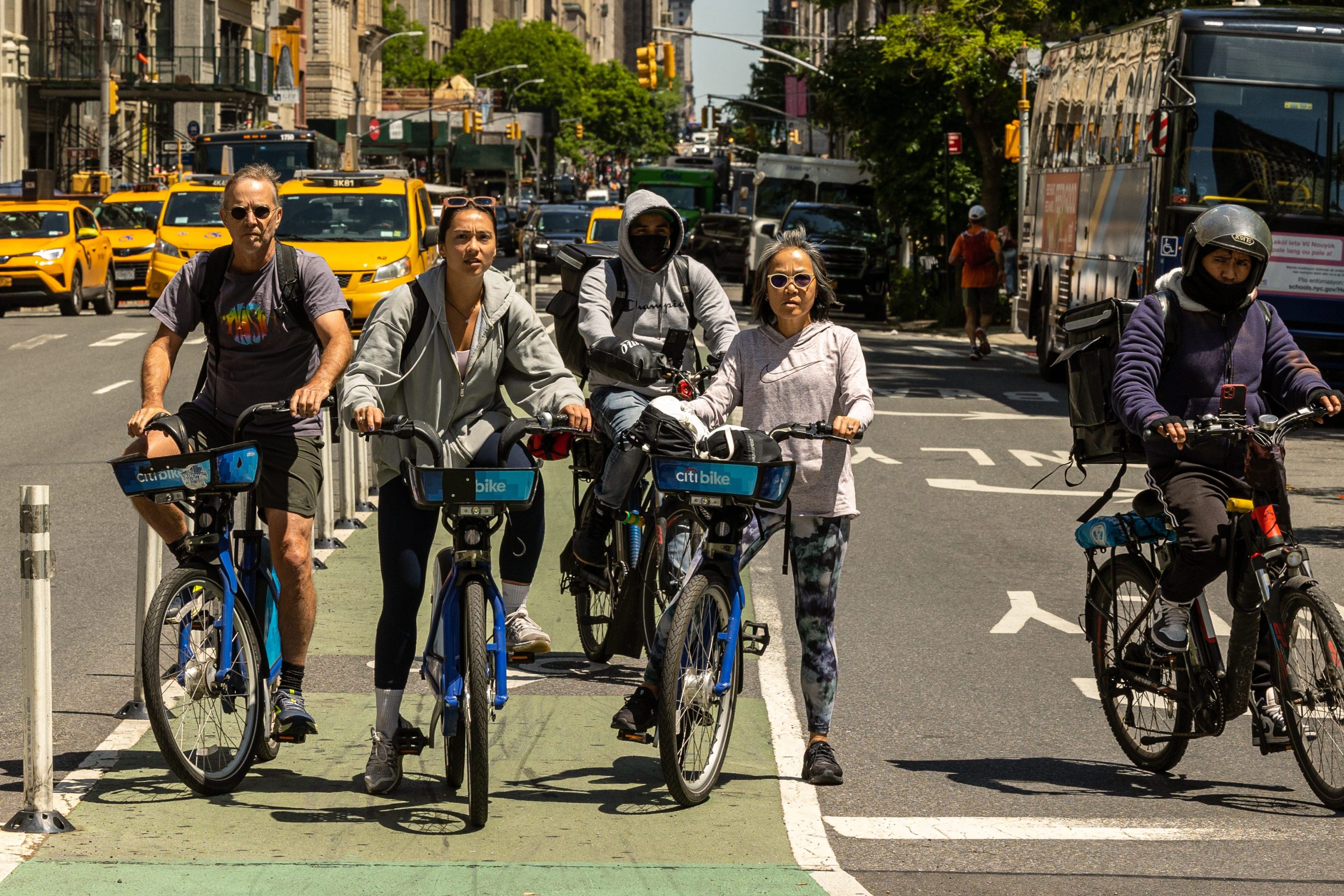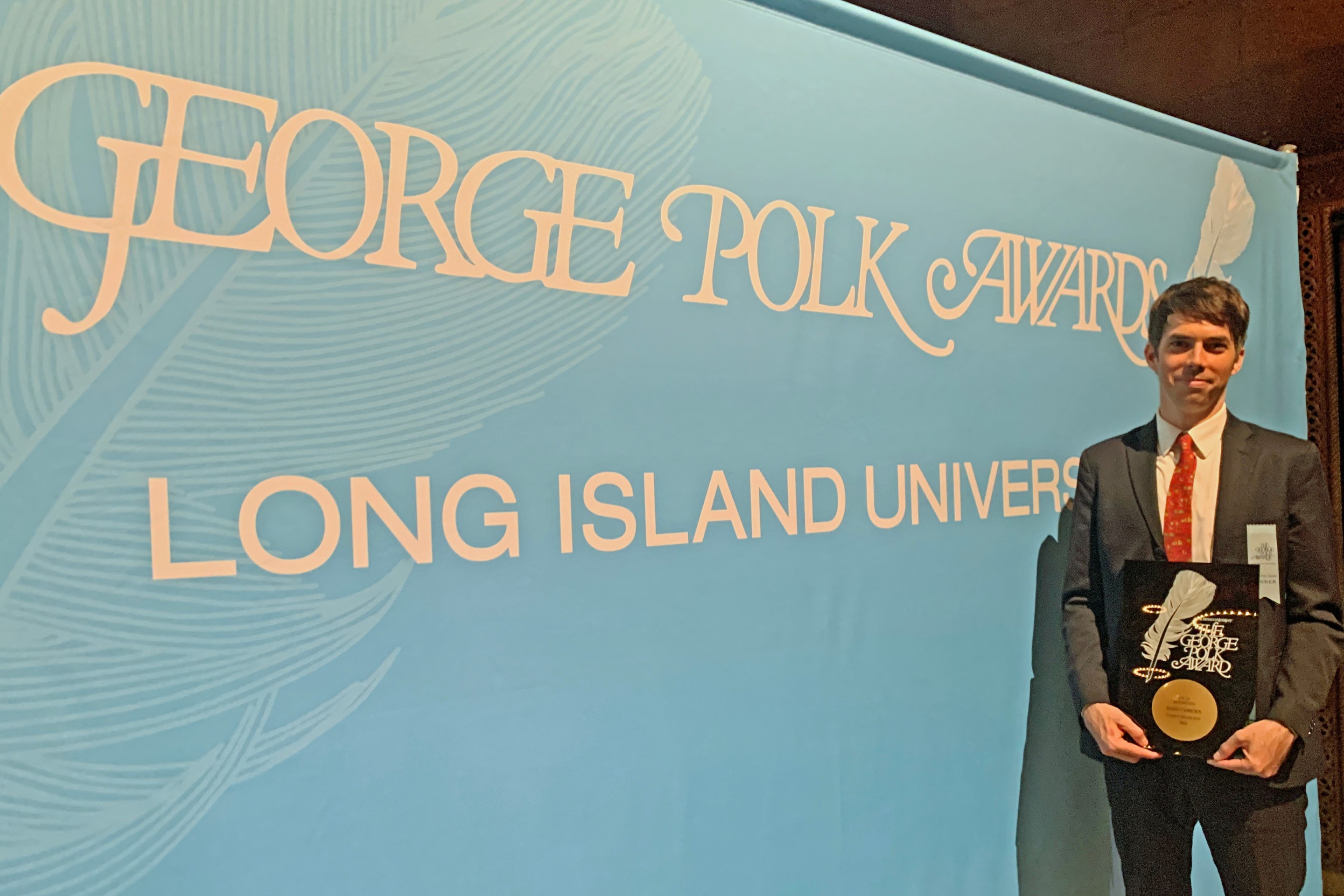New York’s Hometown Paper Doesn’t Get How New York City Streets Work
11:51 AM EDT on June 3, 2013
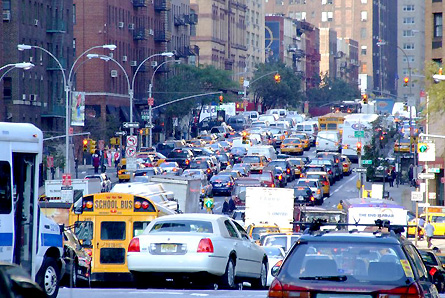
I think I've figured out why, when it comes to allocating space on New York streets, the Daily News opinion team tends to take a position that's completely at odds with making the city a better place. The problem is that the Daily News opinion team doesn't understand how city streets function.
In a piece that ran this weekend, editorial board member Josh Greenman reminds us that people drive motor vehicles to make useful trips, and that New York is already more walkable than Miami. So, now that's settled.
Greenman sees himself as a sort of mediator between different factions -- the bike, the car, and the pedestrian. "New Yorkers can like bikes without having disdain for the automobiles that share the roads," reads the headline, and after condemning "knee-jerk anti-bicyclism," he attempts to position himself as the voice of reasonable middle ground by defending driving:
Behind the zero-sum vision of some pro-bicycle advocates is a tacit assertion that in some parts of the city, cars, those corporate tools, have no claim to the road. They must be managed in the way an incurable disease is managed. God forbid anyone in power should try to make life easier for those who dominate the roads.
But framing the discussion around who has a "claim to the road" or how to "make life easier" for any one subset of people on the road isn't a productive way to analyze streets and transportation policy.
Here's how Streetsblog evaluates the transportation and planning subjects we write about. (This next part will probably be covering well-worn ground for Streetsblog readers. If it's too didactic, I apologize. I didn't know what else to do after reading a column which responds to current transportation policy debates by observing that trucks haul garbage.) The basic question we start from is, "What sort of city do we want to live in?" My answer to that question probably isn't drastically different than Josh Greenman's:
- City streets should be safe from traffic violence, so that people of every age can walk without fear of injury or death.
- People should have convenient access to jobs, schools, and other destinations in their daily lives.
- Streets serve a social and economic function as well as a transportation function. We should maximize their potential as public spaces and as generators of economic activity.
Striving to achieve those goals, a few obstacles loom especially large:
- Major streets have been designed to maximize automobile throughput during times of peak demand (i.e. rush hour). As a result, they are so wide that children and the elderly have difficulty crossing, and when traffic is less intense, the width of the street leads drivers to travel at speeds that endanger pedestrians, cyclists, and other drivers.
- Traffic clogs streets during the times of day when demand for travel is most intense, delaying surface transit and motorists while discouraging walking, bicycling, and social activity.
- Parking -- much of it subsidized or given away to a special class of government placard holders -- induces traffic that chokes streets, and it consumes a huge amount of space, crowding out more economically productive uses.
Greenman bemoans "the zero-sum vision of some pro-bicycle advocates," behind which, he says, lurks "a tacit assertion that in some parts of the city, cars, those corporate tools, have no claim to the road." The part about corporate tools having no claim to the road is just a straw man, but the part about a "zero-sum vision" is interesting.
There's a finite amount of street space in New York City, and if you're serious about reducing traffic injuries, improving access to jobs, and maximizing the economic potential of our streets -- if you want to tackle the obstacles that stand in the way of those goals -- then you have to reallocate some of that limited space to walking, biking, and transit. Sidewalks need to be wider and traffic lanes need to be narrower to reduce injuries. Dedicated transit lanes and safe bike lanes need to be in place so people can travel without jamming the streets and delaying other people. In the spatial sense, street design and transportation policy really is a zero-sum game.
Former Bogotá Mayor Enrique Peñalosa puts it like this: "You can have a city that is very friendly to cars, or you can have a city that is very friendly to people. You cannot have both." To pretend that you can just give something to every mode of transport and say you've made everyone's lives better is to ignore a core truth about how city streets work.
If you're talking about overall public well-being, though, then a "zero-sum vision" is nonsense. When you reduce subsidies for driving and reallocate space from cars to walking, biking, and transit, then you improve quality of life across the board. Traffic injuries will drop for everyone, including people who drive; more people will be able to get to a greater share of the city in a reasonable amount of time; lifeless streets will become more conducive for housing, retail, and work spaces. In a New York where tolls reflect the demand for driving and curbside parking is priced to maintain one or two open spaces per block, some of the biggest beneficiaries will be people who really do need to make a trip in a motor vehicle, commercial businesses making deliveries, and emergency responders. They will finally be unstuck from traffic.
At first, though, there would be plenty of griping, and I think this is the other sense of "zero-sum" that's in play in Greenman's piece. You can't make changes to the streets without upsetting people. If you start paying for something that used to be free, it feels like a loss. If a motor vehicle lane along your car commute is converted into a bicycle lane or a bus lane, that feels like a loss. Even if fewer people are getting hurt and more people can get where they want to go, it may seem like the angry people cancel out the pleased people. Especially if you read a steady stream of letters to the Daily News editors.
Earlier this year, uber-blogger Matt Yglesias coined a helpful term to describe how Beltway pundits managed to apportion equal blame for the nation's budget impasse between President Obama and Republicans in Congress: BipartisanThink. The core characteristic of BipartisanThink is that it prizes the appearance of being above the fray, regardless of what one may actually think of the positions being debated. Now, thanks to Greenman -- who tweeted over the weekend that "there are lots of roads in New York I think are ugly or unsafe" -- we know what BipartisanThink applied to New York City streets and transportation looks like.
Greenman asks, toward the end of his piece, "As we respect and even expand the territories of pedestrians and bicyclists, the question is: Do we do the same for the many who drive?" In New York, with its finite street space, the question is a non-sequitur. It's an expression with no meaning except to occupy the middle-of-the-road, unintentionally calling for New York to be less like New York and more like Parsippany.
Stay in touch
Sign up for our free newsletter
More from Streetsblog New York City
Car Crashes by City Workers Cost Taxpayers $180M in Payouts Last Year: Report
A record number of victims of crashes involving city employees in city-owned cars filed claims in fiscal year 2023 — and settlements with victims have jumped 23 percent, a new report shows.
Tuesday’s Headlines: Biking with a Dutchman Edition
You really get a fresh perspective on city cycling when you do it with someone from Holland. Plus other news.
City Urges Judge to Toss Anti-Open Streets Lawsuit
The city's not responsible for 24-7 car access to every street, officials argued.
Opinion: Connect the Dots of Manhattan’s Missing Bike Lanes
Only a few miles of missing protected lanes stand in the way of a robust bike network.
Monday’s Headlines: Thanking the Academy Edition
We would be remiss if we didn't offer some photos and copy about Friday's George Polk Awards ceremony, plus other news.

